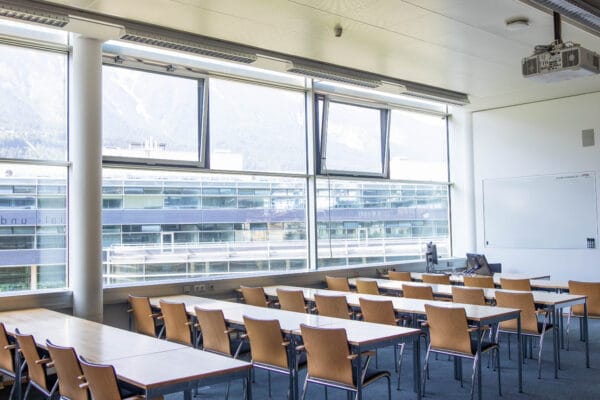
NAME:
MCI - SR 303
BUILDING:
Management Center Innsbruck
FLOOR:
3
TYPE:
Seminar Room
CAPACITY:
54
ACCESS:
Only Participants
EQUIPMENT:
Beamer, Handicapped Accessible, PC, Sound System, Whiteboard, WLAN (Eduroam), Microphones
The Highlands EU research project focuses on Initiatives of Sustainable Development in Highlands (ISDH), and community engagement within highland regions. One of the key strategies for disseminating the project’s findings is through audiovisual communication, which simplifies complex scientific concepts and makes them accessible to a wider audience. Videos, documentaries, infographics, and other visual formats are utilized to illustrate the project’s research outcomes, highlighting its relevance for both local communities and the broader public. Digital distribution platforms—such as YouTube, social media, and streaming services—play a pivotal role in the dissemination of the Highlands EU project’s findings. These platforms enable global outreach, real-time updates, and direct audience engagement, which help researchers and stakeholders interact with the public and foster dialogue. The flexibility of audiovisual formats ensures that scientific data is presented in ways that are engaging and understandable for diverse audiences, including non-experts and younger generations. This study examines how the Highlands EU research project has leveraged audiovisual media and digital platforms to enhance public engagement, accessibility, and awareness of the project’s goals and outcomes, thus proposing new techniques to maximize reach. By strategically planning content and collaborating with communication professionals, the project could maximized its impact, demonstrating the value of digital tools in advancing science communication and fostering broader public understanding of sustainability issues.

We and use cookies and other tracking technologies to improve your experience on our website. We may store and/or access information on a device and process personal data, such as your IP address and browsing data, for personalised advertising and content, advertising and content measurement, audience research and services development. Additionally, we may utilize precise geolocation data and identification through device scanning.
Please note that your consent will be valid across all our subdomains. You can change or withdraw your consent at any time by clicking the “Consent Preferences” button at the bottom of your screen. We respect your choices and are committed to providing you with a transparent and secure browsing experience.